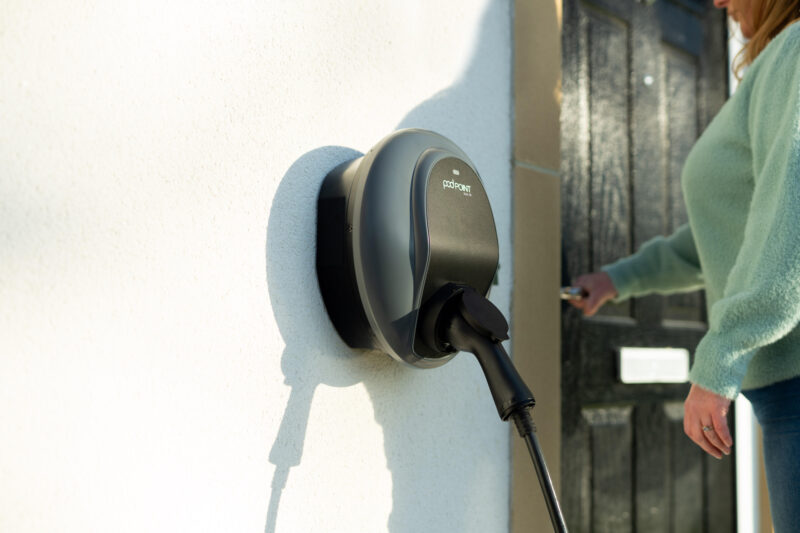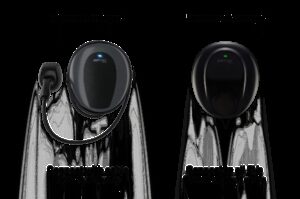Tethered vs Untethered EV Charger: Which is the Best?
A guide comparing electric vehicle (EV) chargers with and without a permanently fixed charging cable.
Last updated: Aug 28, 2025 • 5 min read

Summary
Whether a tethered or untethered EV charger is best for you depends on your budget, how much convenience matters to you, and your aesthetic preferences.
What is a tethered and untethered charger?
If you’ve ever compared EV home chargers, you’d have come across the terms tethered and untethered. They simply mean that a chargepoint comes with a fixed (tethered) or without a fixed (untethered) cable.
Both will do the job of charging your electric car and have a number of advantages and disadvantages. When choosing between the two, you should consider which charger option suits you and your lifestyle best before investing in a device to charge your EV battery at home.
What’s the difference between tethered and untethered chargers?
The key difference is in the way the charging cable attaches to the device.
A tethered charger will be installed with a pre-fitted cable that cannot be removed. It’s fixed to the device, making it an irremovable part of the charger.
An untethered charger has no attached cable by default. In its place, you’ll find a socket. To charge your EV, you’ll need to plug your own cable into this socket.

What is a tethered charger?
A tethered EV home charger is a chargepoint placed on a wall with a permanently attached cable, which cannot be removed from the device. This type of setup tends to be larger than an untethered charger because the cable is stored alongside the charging device, either on display or hidden within a box.
The cable fixed to a tethered charger will typically be a Type 2 connector (which is the standard for Europe), so you should be able to plug in and charge your EV without having to find and connect a different cable (with a Type 1 connector).
Advantages of a tethered charger
Quick and easy to use – No need to locate your cable and attach it to the device before charging your EV. You can simply plug the tethered cable into your electric car and charge.
Thief-proof – A cable that is tethered to your charger is harder to steal, so you’ll feel safer leaving it out.
Disadvantages of a tethered charger
Limited to a specific cable and connector – if you decide you want to change to a longer or shorter cable or switch the connector type after your charger is installed, you’ll have to change the whole charger.
Larger setup - tethered chargers take up more space than a charger without a fixed cable, which might not be for you if you're after a super sleek and simplistic look.
Cost – The addition of the cable means tethered chargers cost more than untethered chargers. If you already have the right cable for your EV and you don’t plan on changing your EV anytime soon, the extra cost becomes an unnecessary expense.
What is an untethered charger?
An untethered charger has no permanently attached cable. It’s sometimes also referred to as a universal charger because it has a socket which allows you to plug in cables with different types of connectors.
You can learn more about EV charging connector types in our guide.
Advantages of an untethered charger
Minimalist look – No fixed cable means an untethered charger takes up less space, allowing for a sleeker design.
Cheaper option – Untethered chargers tend to cost less than tethered equivalents because you don’t have to pay for the cable. If you already have a compatible charging cable, you’ll be able to save money when opting for a untethered charger.
Flexibility and future-proofing – You’re free to change your cable and connector without having to replace the entire charger.
Disadvantages of an untethered charger
No cable, no charging – You have to remember to bring your cable or where it was last stored. If you use your charging cable away from home and forget to bring it back, you won’t be able to use your home charger.
Less convenient – Having an untethered charger requires you to unpack, plug, unplug and pack away your cable every time you use your home charger, which takes more time than simply plugging in a tethered cable.
Not for the forgetful - Once you’re done charging you need to remember to unplug the cable and pack it away. If you don’t, it could in theory be unplugged by anyone.
Which is better – tethered or untethered?
Objectively, no charger is better than the other, so the choice between tethered and untethered is up to your preferences and requirements. Untethered chargers are generally more flexible as they allow you to change your cable to suit your needed length and connector type, which is great if you plan to regularly change your electric car. On the other hand, tethered chargers offer easier everyday use and come with cables that are longer than common cables used with tethered chargers.
The key things to consider before making your choice are:
Convenience
Cable length
Cost
Charging frequency
Aesthetics

